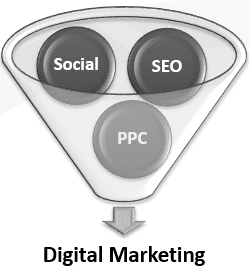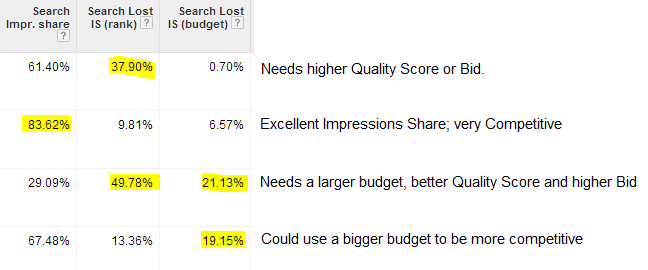You have a great looking website, but this is not Field Of Dreams. Just because you built it does NOT mean people will come. So, how do you increase traffic to your website? Search Engine Optimization (SEO), Social Media, Email Marketing, Paid Advertising, etc… Where should you start???

Here are a few questions to consider:
- Is your website mobile-friendly?
- Is your content clear and concise?
- Is it easy to achieve the end goal on your website?
- Do you have a budget to acquire more traffic?
- Do you need web traffic immediately?
While all of the above listed options are valid methods to increase traffic, some take time (SEO), or require an existing audience (Email and Social Media.) However, if you answered “Yes” to all the above questions, then you are ready to run Paid Digital Advertising. Running Paid Ads isn’t quite that simple. What kind of ads – Search, Display, Video or Shopping? Where will these Ads be shown – Search Engines, across the internet, on Social Media? And very possibly the most important how will you reach your desired audience (targeting settings)?
While this blog will never answer all your possible questions about Paid Digital Advertising, let’s at least tackle some of the big ones.
1. Type of Paid Digital Ads
Search Ads – Context based ads that appear above and below Search Results. These ads consist of Headlines, Body Copy, URL and often various Extensions (ie. location, phone numbers and other additional information.)
Display Ads – Image ads that show on various sites above, below, next to, and among a websites content. Since these ads are not the primary reason a person comes to the given website, they need to grab their attention and give them a reason to click.
Video Ads – Often shown before, after or during a desired video similar to a tv commercial. Again, this ad needs to distract a person from their desired video and give them a reason to click.
Shopping Ads – Product focused with the goal for selling typically via an ecommerce site.
2. Placement of Paid Digital Ads
Search Engines – Seems obvious, but Search Ads are shown on Search Engine Result Pages (SERP.)
Display Network – Display Ads can show almost anywhere on the web. There are several Display Networks with the most popular being the Google Display Network (GDN) which boasts to include over 2 million websites,videos and mobile apps. Since videos are included in the Display Network, your video ads will show on this network along with your display ads
Shopping Ads – These ads mostly shown on Search Engine Shopping sections (Google and Bing). However, depending on targeting setting your shopping ads could also be Display ads and therefore be shown across the Display Network.
Social Media Advertising – Facebook/Instagram, Twitter, LinkedIn and several other social media platforms have their own Advertising platform. These ads are often similar to display ads, since they are often shown along the side of the page and are not based upon a search, but rather other targeting settings (geographic, demographic and more.)

3. Target Audience
The success of your Ads ultimate starts with your targeting settings. Even with the greatest Ads (search, display or other) shown to the wrong audience will never succeed, While Search Ads are primarily targeting and shown based on what a user searches, there are several other targeting settings involved. A short list of setting that can (and should) be setup on most, if not all, Paid Digital Advertising campaigns:
- Geographic Location
- Day Parting/Time of Day
- Demographics (Gender, Age, Parental Status, Household Income)
- Interest/Topics (for Display Campaigns)
- Bidding Strategy
- Device Targeting/Bid Adjustments
- ReMarketing/Similar Audiences/In-Market Audiences
Following this very oversimplified process to setting up your Paid Digital Advertising will help put you on the path to not only driving web traffic but also growing your business and bottom line. However this is only getting you setup, you will still need to monitor and optimize your Paid Advertising campaigns on a regular basis.
Ready to Start your Paid Digital Advertising? Want Help setting up, monitoring and optimizing your Advertising Campaigns, or just have additional questions – Contact DaBrian Marketing Today.





